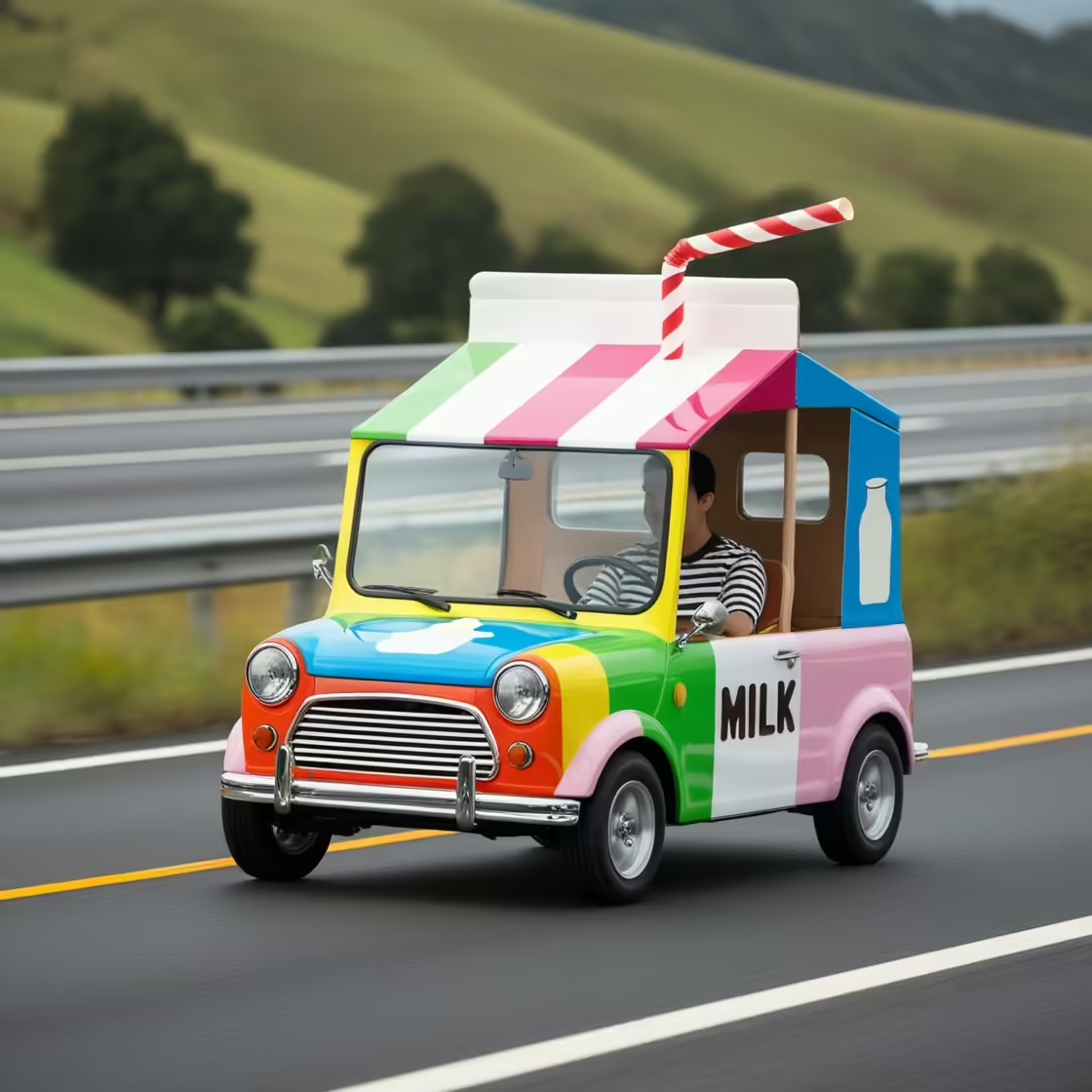Have you ever imagined driving a car that looks like a milk carton? It may sound whimsical or even a little odd, but the milk carton-shaped car has recently become a talking point for car enthusiasts and designers. In a world where innovation and creativity intersect with eco-conscious design, these playful vehicles are gaining attention. Whether it’s for marketing purposes, sustainability efforts, or pure novelty, these cars offer more than just a funny look.
In this article, we’ll explore everything about milk carton-shaped cars—from their inspiration and design to their impact on the automotive industry. If you’ve ever been curious about this eccentric trend, you’re in the right place!
What is a Milk Carton-Shaped Car?
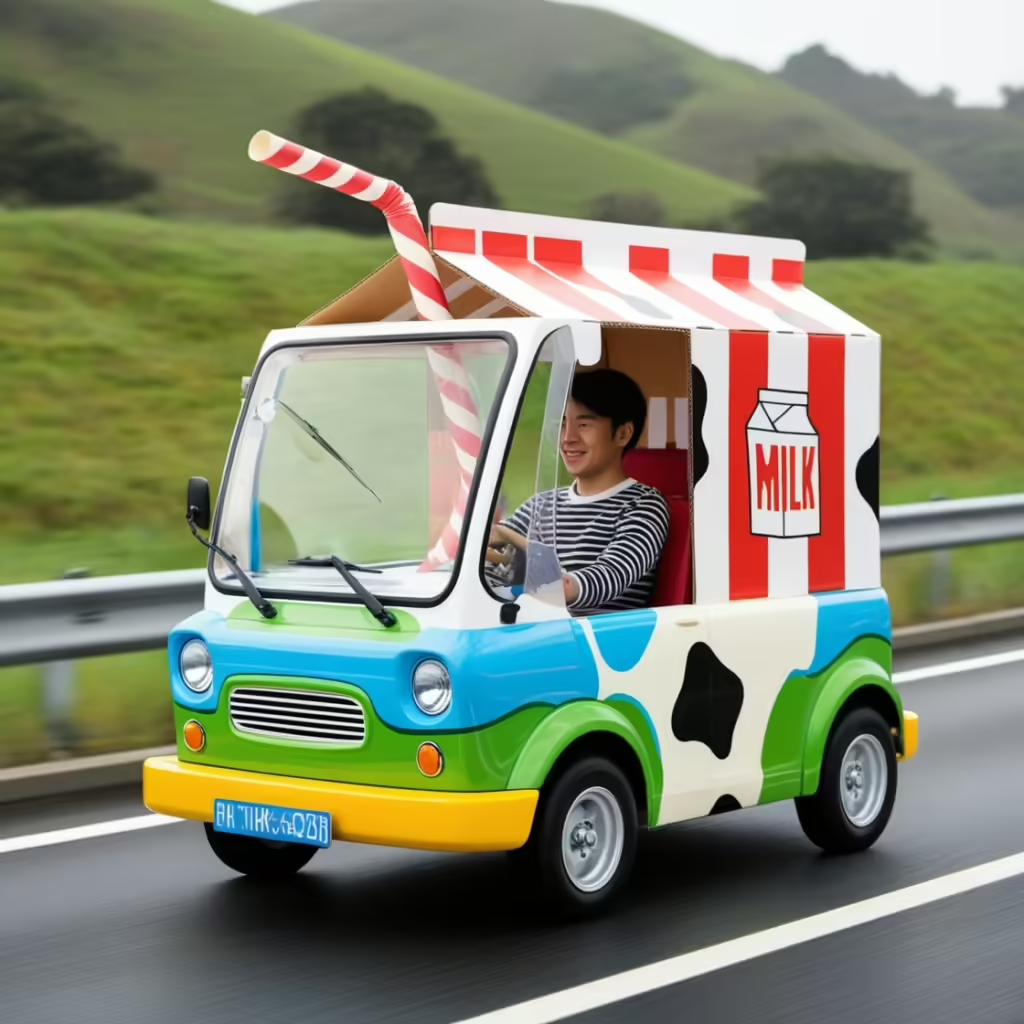
A milk carton-shaped car is exactly what it sounds like—a vehicle designed to resemble a classic milk carton. From its boxy, rectangular shape to the foldable top, these cars mimic the aesthetic of the milk containers we’ve all grown up with. Though they may look playful, there is often a method behind the madness.
The Appeal of Unique Designs
We live in an era where standing out is key, and automotive design is no exception. Cars like the milk carton-shaped car are designed to break the mold and capture the imagination of people looking for something new and different. Much like the “Cube Cars” of the early 2000s, the milk carton-shaped car is an extension of this trend of playful, boxy designs.
The Origin of the Milk Carton-Shaped Car
Where did this unusual design idea come from? The concept of a milk carton-shaped car can be traced back to two major motivations: quirky design innovation and eco-consciousness.
Design Innovation: Thinking Outside the Box
In the world of automotive design, where sleek lines and aerodynamics have dominated for decades, the idea of creating something that completely defies these norms can be exciting. Designers who worked on the milk carton-shaped car wanted to show that practicality could meet whimsy, creating a vehicle that both draws attention and serves a purpose.
This concept also pays homage to retro car designs that have captured nostalgia while delivering futuristic aesthetics. The idea is to break free from traditional norms and show that vehicles can be more than just means of transportation—they can be a statement.
The Eco-Friendly Movement
One of the major driving forces behind the milk carton-shaped car concept is its alignment with sustainability efforts. Boxy, compact designs are typically more energy-efficient and easier to manufacture with eco-friendly materials. The use of biodegradable materials and modular assembly can reduce the car’s carbon footprint, making it a favorite for environmentally conscious consumers.
How Are Milk Carton-Shaped Cars Made?
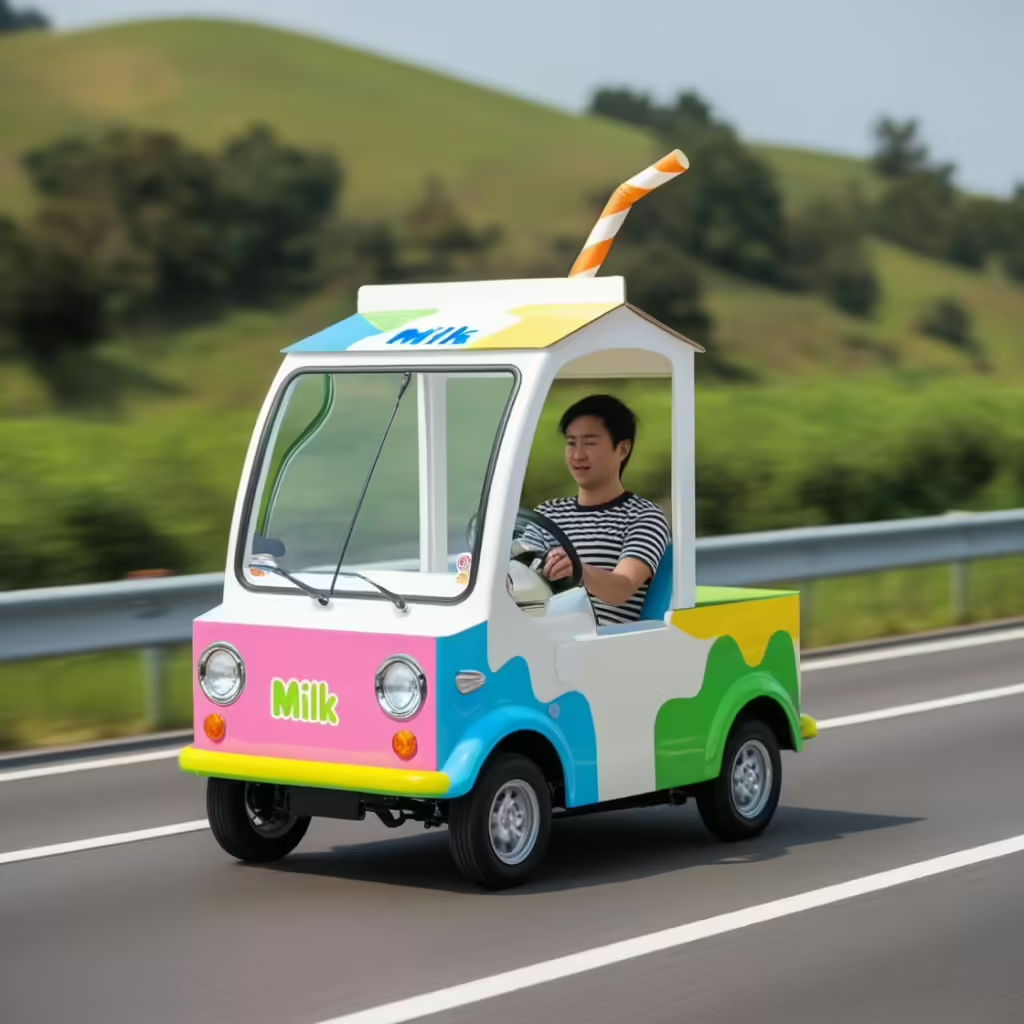
Designing and manufacturing a milk carton-shaped car requires creativity, collaboration, and technology. Since these vehicles are not widely mass-produced (yet), most are custom-built, often for marketing campaigns or niche eco-friendly markets.
Materials Used in the Manufacturing Process
To maintain an eco-friendly stance, many manufacturers focus on sustainable materials like biodegradable plastics, recycled metal, and even eco-friendly fabrics for the interiors. These materials contribute to reducing environmental impact without compromising the vehicle’s performance.
Key Materials:
- Recycled Plastics
- Aluminum for lightweight frames
- Biodegradable interior fabrics
- Solar-powered or electric drivetrains for energy efficiency
3D Printing in Car Manufacturing
One of the most innovative techniques used in the production of these cars is 3D printing. This technology allows manufacturers to experiment with design shapes and materials while reducing waste during the manufacturing process. The modular nature of 3D printing also makes it easier to create unique, customizable designs at a lower cost.
Functional or Just Fun? The Practicality of a Milk Carton-Shaped Car
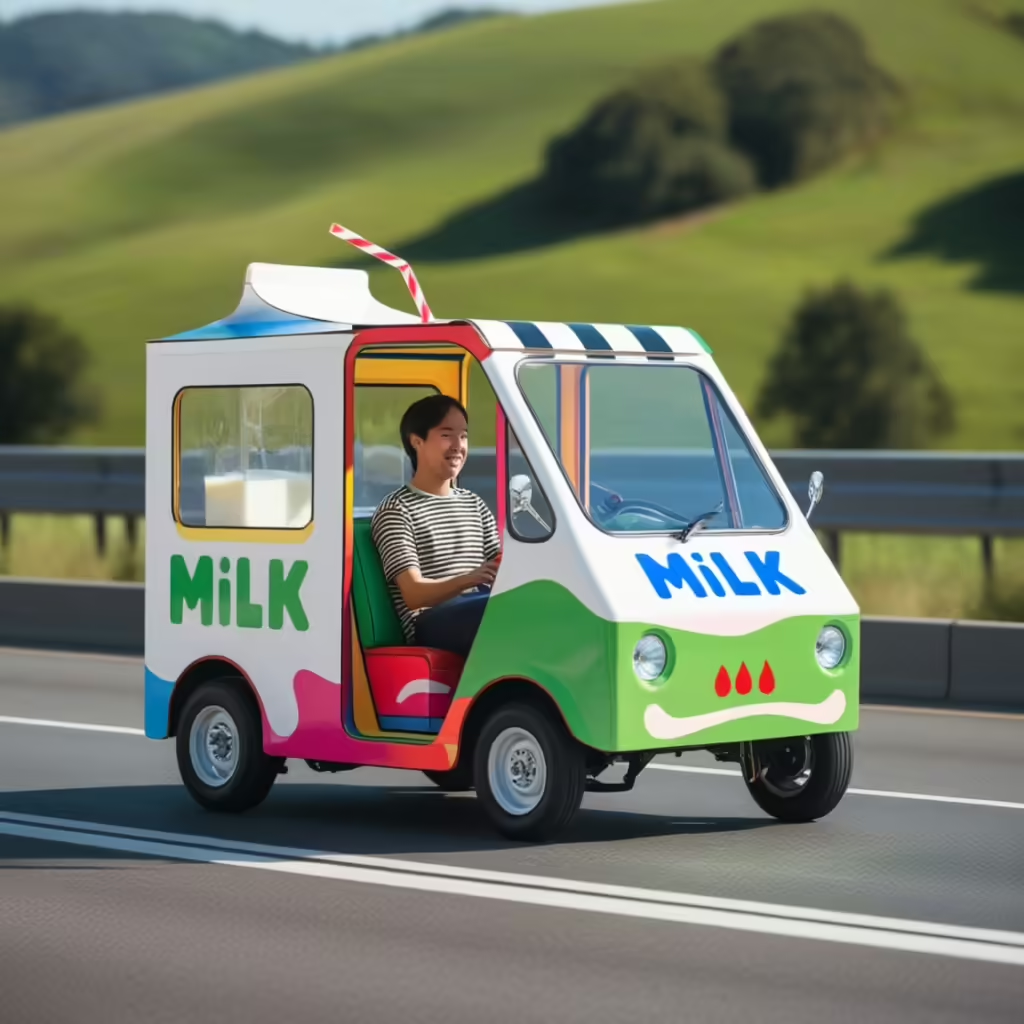
While the aesthetics of the milk carton-shaped car might be a hit, the practical aspect of such a vehicle is always a concern. Could a vehicle shaped like a milk carton actually be functional on the road?
Aerodynamics and Efficiency
Boxy designs aren’t known for their aerodynamic efficiency, which can be a drawback in a world that values speed and fuel economy. However, many milk carton-shaped cars are designed for urban environments, where high speeds aren’t as necessary, and efficiency can be focused more on energy use rather than aerodynamics.
Eco-Friendly Features
These cars often boast eco-friendly features like electric or hybrid engines, solar panels for auxiliary power, and low-emission materials. The goal is to offer an eco-conscious option for drivers who want to make a statement while minimizing their carbon footprint.
Urban Appeal
The milk carton-shaped car’s compact size makes it ideal for city driving and parking in tight spaces. Its quirky design also makes it stand out in crowded urban areas, where businesses and individuals alike enjoy using these cars as attention-grabbing marketing tools.
Milk Carton-Shaped Cars in Marketing and Advertising
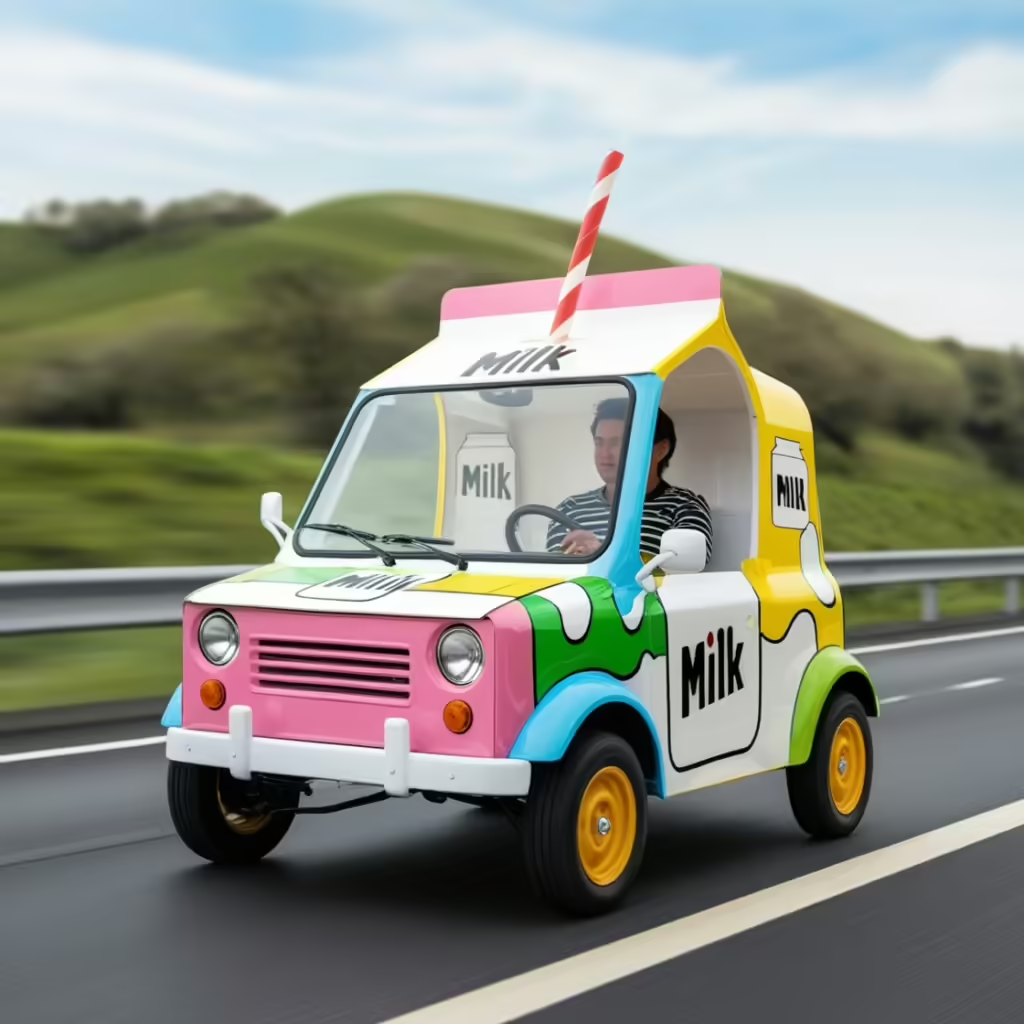
Milk carton-shaped cars have gained significant popularity in the marketing and advertising industry. Brands are always on the lookout for creative ways to capture consumer attention, and a car shaped like a milk carton does exactly that.
Mobile Billboards
Imagine driving through town in a vehicle that looks like a giant, rolling milk carton with your company’s branding on it. It’s hard not to notice! Brands often use these cars as mobile billboards, taking their marketing messages directly to the streets and attracting the attention of potential customers in a fun and memorable way.
Experiential Marketing
Experiential marketing is all about creating an experience for consumers. A milk carton-shaped car creates a unique, immersive brand experience. Whether it’s at a food festival, product launch, or street fair, these vehicles generate buzz and excitement, helping brands engage with their target audience in creative ways.
Popular Models and Concept Cars
Though milk carton-shaped cars are not yet widely mass-produced, a few standout models have made a name for themselves. From concept cars to actual working prototypes, these vehicles are catching the eyes of both consumers and industry insiders.
Concept Cars on Display
At car shows and tech exhibitions, milk carton-shaped cars often draw a crowd. Designers showcase these whimsical yet practical vehicles as the future of urban mobility. Companies like Honda and Nissan have toyed with similar ideas in their design labs, signaling a possible future for box-shaped, eco-friendly cars.
The Future of Custom Cars
Custom car manufacturers and artists have embraced the trend of creating milk carton-shaped vehicles for private clients, advertising agencies, and even eco-conscious businesses. The ability to customize not only the exterior design but also the sustainability features makes these cars a hit for niche buyers.
The Role of Electric and Hybrid Technology
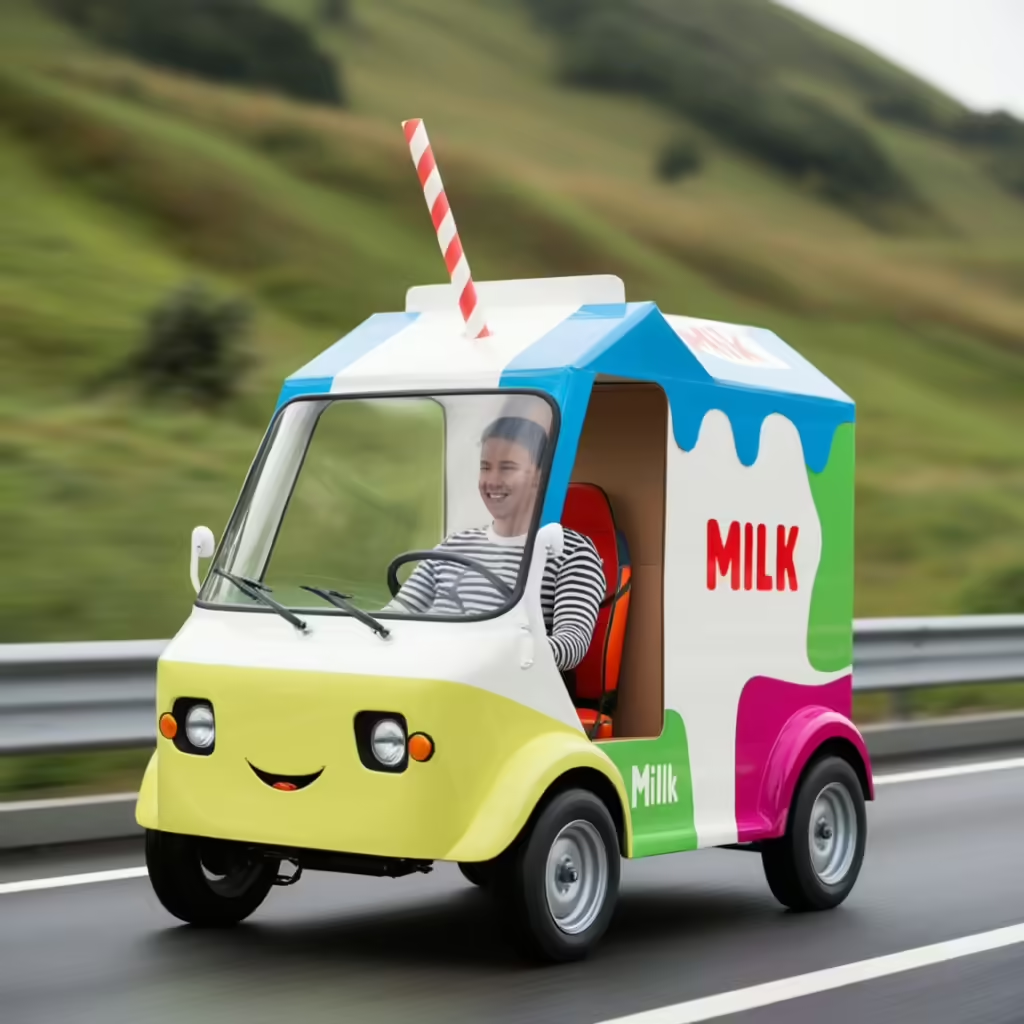
Electric and hybrid technology plays a significant role in the development of milk carton-shaped cars. Given the global push toward electric vehicles (EVs), it only makes sense that this quirky design trend would incorporate cutting-edge green technology.
Solar-Powered Milk Carton Cars
Some manufacturers have experimented with solar-powered milk carton-shaped cars, adding solar panels to the roof and sides to capture energy from the sun. This energy can be used for auxiliary power, such as running the air conditioning, headlights, or charging the car’s battery.
Electric Engines and Battery Efficiency
With their compact size, milk carton-shaped cars lend themselves well to electric engines. Lightweight and efficient, these cars are well-suited for short commutes, city driving, and environmentally conscious consumers who prioritize sustainability in their vehicle choices.
Can We Expect to See More Milk Carton-Shaped Cars?
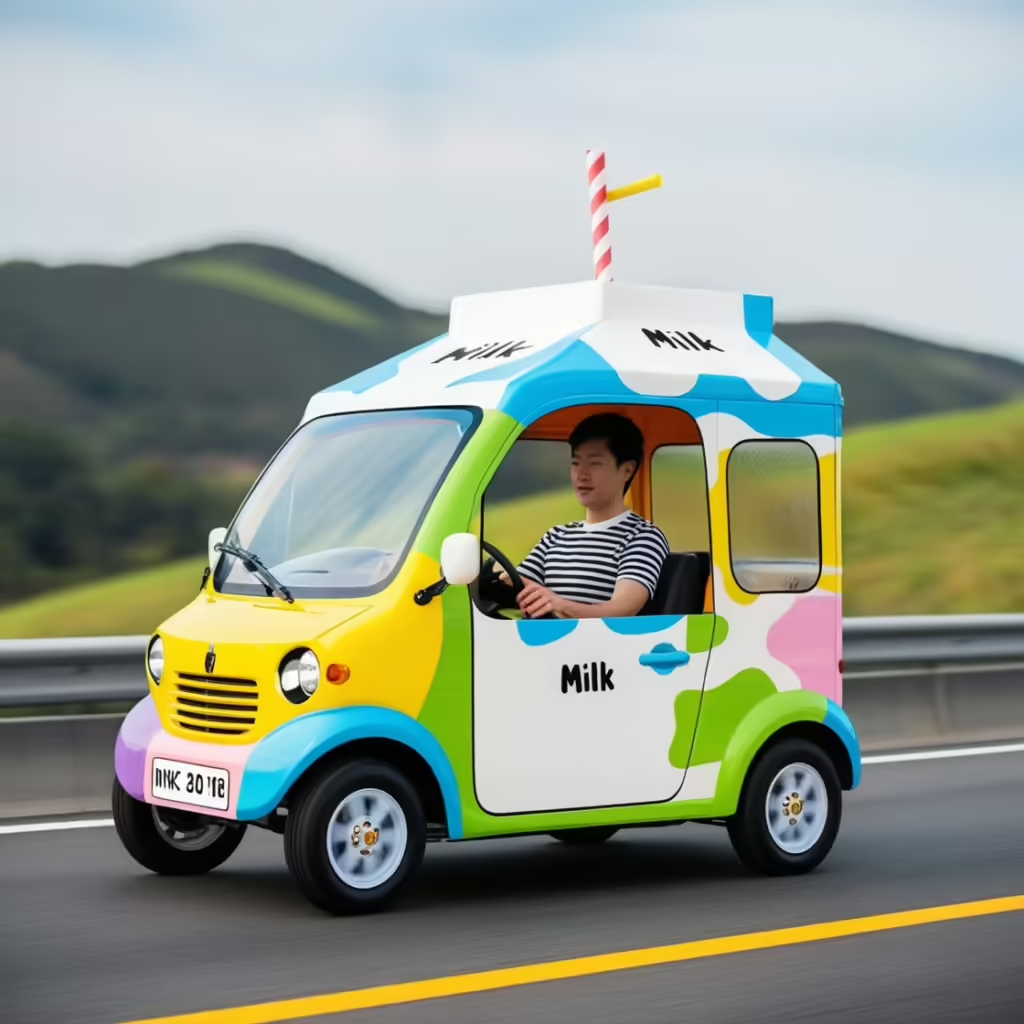
As whimsical as the idea may seem, the milk carton-shaped car is a reflection of a broader shift toward customizable, eco-friendly, and creative automotive designs. With the rise of urbanization, smaller and more unique vehicles are becoming increasingly popular, and this design could be part of a bigger movement toward cars that are both fun and functional.
The Rise of Niche Automotive Markets
As the market continues to evolve, we’re seeing more niche cars and concepts emerge. Whether it’s tiny smart cars designed for crowded cities or milk carton-shaped vehicles designed for eco-conscious drivers, the automotive industry is diversifying to cater to specific consumer demands.
Influence of Sustainable Design
Sustainability is a growing concern in all industries, and the automotive world is no exception. With more attention being placed on reducing carbon footprints, consumers may turn to smaller, eco-friendly vehicles like the milk carton-shaped car. Though it might seem like a novelty today, the combination of quirky design and environmental consciousness could fuel its popularity in the near future.
The Potential of Milk Carton-Shaped Cars in Eco-Friendly Urbanization
As cities grow and urban spaces become denser, the demand for smaller, more efficient vehicles is on the rise. The milk carton-shaped car, with its compact design and environmental considerations, is perfectly positioned to be part of this future.
Urban Mobility and the Compact Car Trend
Urbanization has led to the development of compact, nimble cars that are ideal for navigating crowded streets and squeezing into tight parking spots. The boxy design of the milk carton-shaped car is an extension of this movement, offering a vehicle that’s both practical and attention-grabbing. With urban dwellers increasingly prioritizing eco-friendly options, this quirky design may find itself as a staple in the future of city driving.
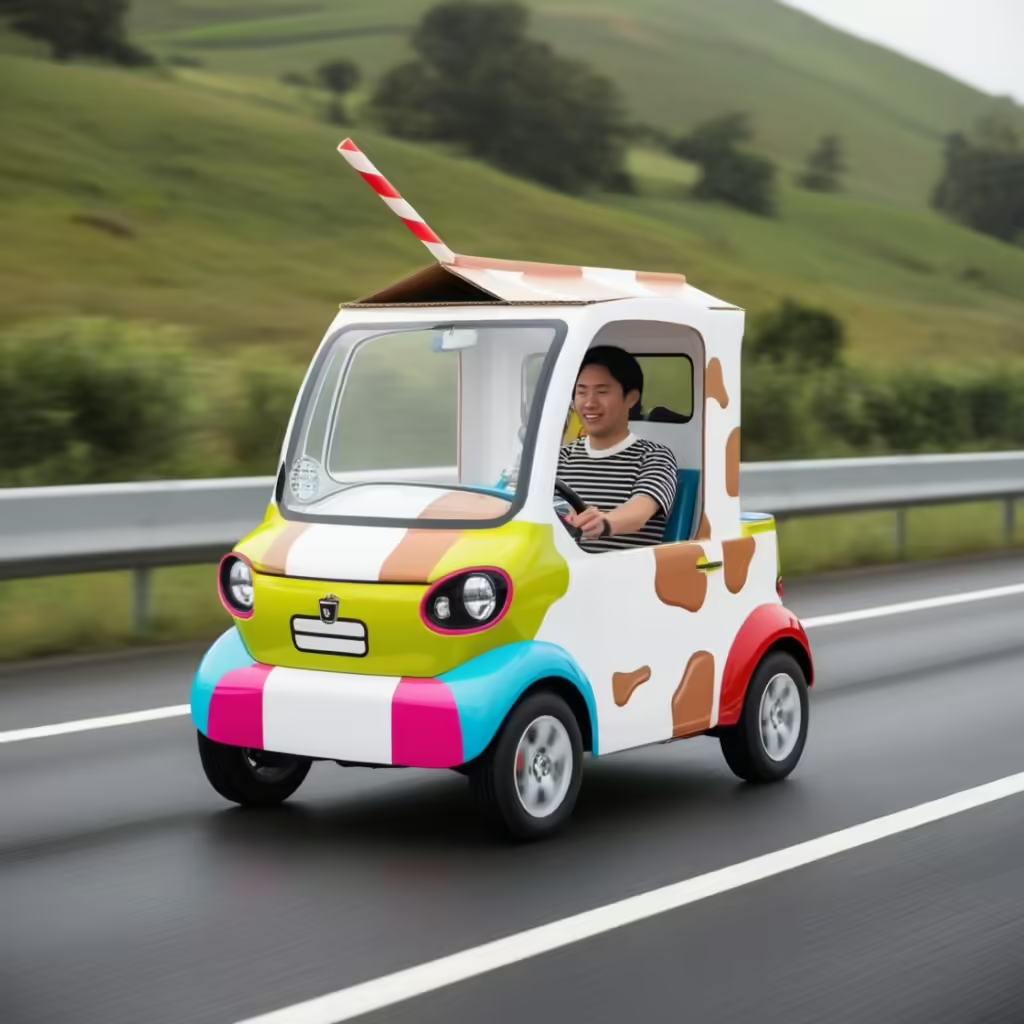
Smart Technology Integration in Milk Carton-Shaped Cars
As vehicles become smarter, integrating technology into the design of milk carton-shaped cars is an exciting prospect. From autonomous driving features to smart energy management, these cars have the potential to be not only eco-friendly but also technologically advanced.
Autonomous Driving Potential
With advancements in autonomous driving technology, smaller cars are ideal candidates for self-driving features. Imagine a fleet of milk carton-shaped cars navigating urban areas autonomously, providing rideshare services or functioning as mobile delivery vehicles. Their size and unique appearance could be leveraged for both functional and novelty purposes, making them a hit in the urban mobility space.
Smart Energy Management
One of the key challenges of electric and hybrid vehicles is optimizing energy use. Milk carton-shaped cars, with their smaller size, offer an advantage here. By integrating smart energy management systems, these vehicles can maximize battery efficiency, especially in city driving conditions. Features such as regenerative braking and solar power integration could further enhance their eco-friendly credentials.
Milk Carton-Shaped Cars and the Future of Marketing
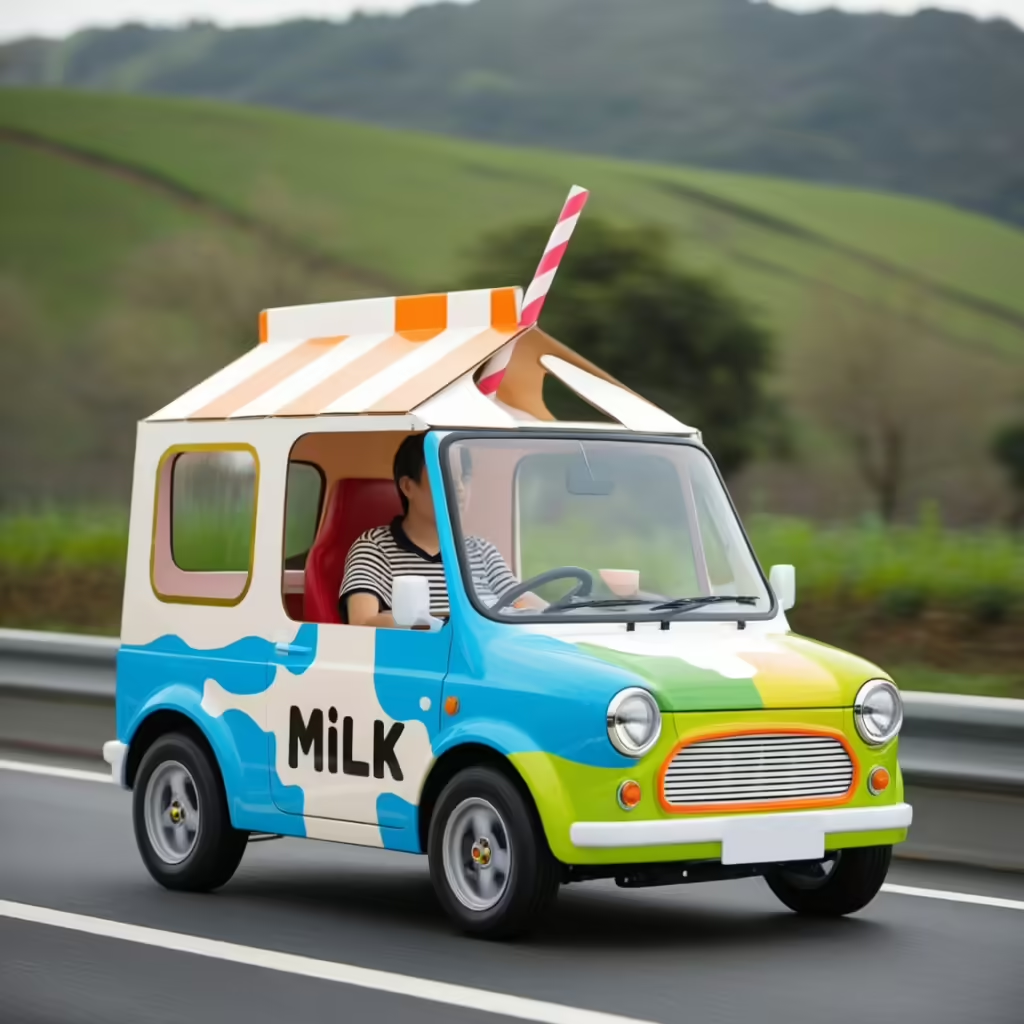
As we’ve mentioned, these cars have already found their way into marketing campaigns, but the potential doesn’t end there. The future of advertising could see even more creative uses of milk carton-shaped cars as brands look to stand out in an increasingly saturated market.
Augmented Reality (AR) and Interactive Marketing
Imagine a milk carton-shaped car equipped with AR technology, allowing passersby to interact with the vehicle through their smartphones. Brands could use AR to create interactive experiences, giving consumers a virtual tour of their products or services right from the street. This could add a new dimension to mobile advertising, making these vehicles even more appealing for businesses looking to innovate.
Pop-Up Shops on Wheels
With the rise of experiential marketing, brands are increasingly using pop-up shops to engage with consumers. A milk carton-shaped car could easily be transformed into a mobile pop-up shop, offering a unique and memorable brand experience. Whether it’s distributing free samples, selling limited-edition products, or providing exclusive content, these cars could serve as a creative marketing platform that drives consumer engagement.
Overcoming Challenges in Milk Carton-Shaped Car Adoption
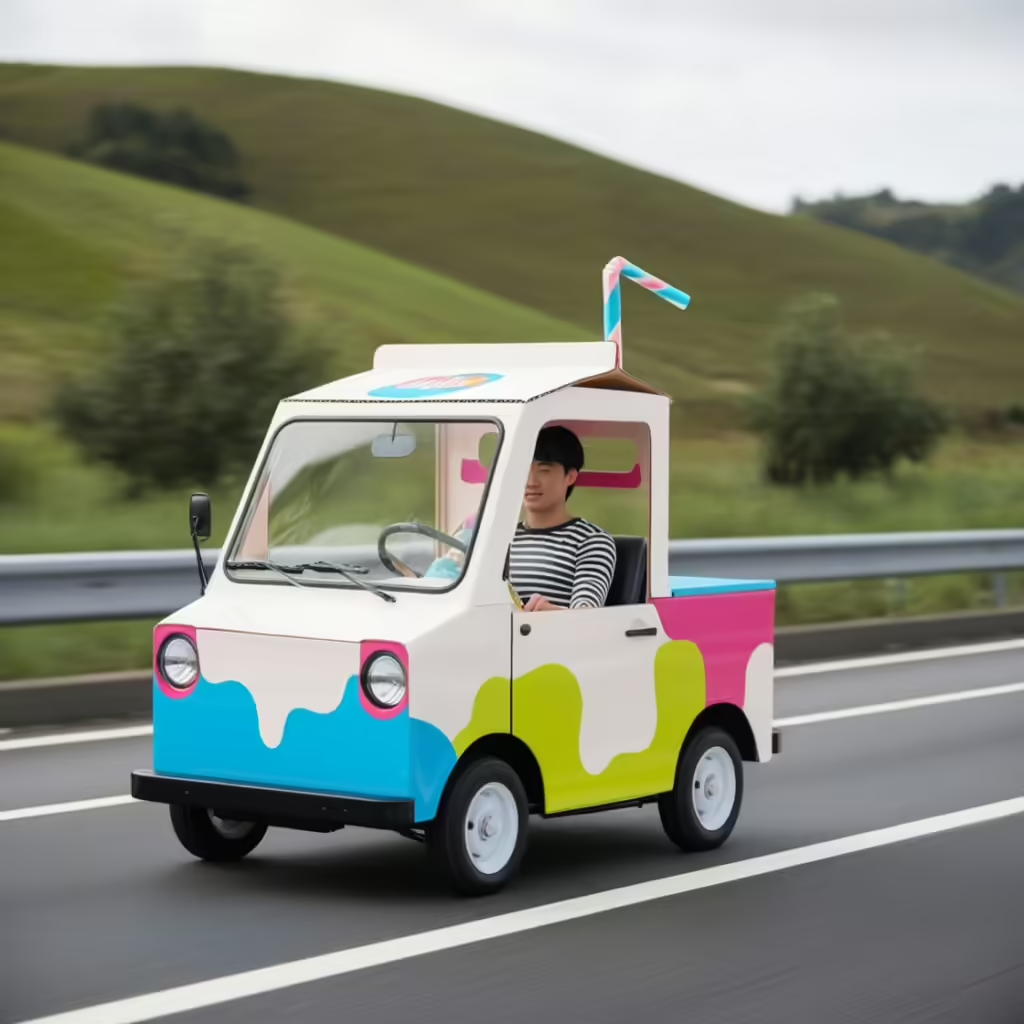
While the concept of a milk carton-shaped car is appealing on many levels, there are still challenges to overcome before it can become a mainstream vehicle. From manufacturing costs to safety concerns, let’s explore some of the potential obstacles.
Cost of Custom Manufacturing
Since most milk carton-shaped cars are currently custom-built, the cost of manufacturing is significantly higher than that of mass-produced vehicles. For the design to catch on in the mainstream automotive market, manufacturers would need to find ways to streamline production and reduce costs. Advances in 3D printing and modular design could help lower these barriers, but it remains a hurdle to widespread adoption.
Safety and Regulations
Safety is a critical concern when it comes to vehicle design, and the boxy nature of a milk carton-shaped car may pose challenges in meeting crash-test standards. Manufacturers would need to ensure that the car’s unique shape doesn’t compromise its structural integrity or the safety of its occupants. Additionally, meeting regulatory standards in different regions could be complicated by the unconventional design, further slowing down mass production.
Consumer Perception
While some people may love the quirky, fun nature of a milk carton-shaped car, others may find it impractical or even gimmicky. Convincing a broader audience to adopt such a non-traditional vehicle could be a challenge, especially in a market where sleek, aerodynamic designs dominate. However, as consumer tastes continue to evolve, particularly with the rise of eco-conscious buyers, the milk carton-shaped car may find its niche.
Collaboration Between Designers and Eco-Innovators
To make milk carton-shaped cars a more viable option, collaboration between car designers and eco-innovators will be key. This partnership could lead to breakthroughs in sustainable design, pushing the boundaries of what’s possible in terms of both aesthetics and functionality.
Exploring Sustainable Materials
Sustainable materials will continue to play a pivotal role in the future of vehicle design. Collaborating with materials scientists and eco-innovators, car designers could find new ways to incorporate biodegradable, recycled, and low-impact materials into the structure of milk carton-shaped cars. From plant-based plastics to solar-integrated roofs, the possibilities are vast.
Partnerships with Tech Innovators
In addition to materials innovation, tech companies could collaborate with automotive designers to integrate cutting-edge features like autonomous driving, AI-powered safety systems, and smart energy management. These partnerships would ensure that milk carton-shaped cars are not only fun and eco-friendly but also technologically advanced and competitive in a rapidly evolving market.
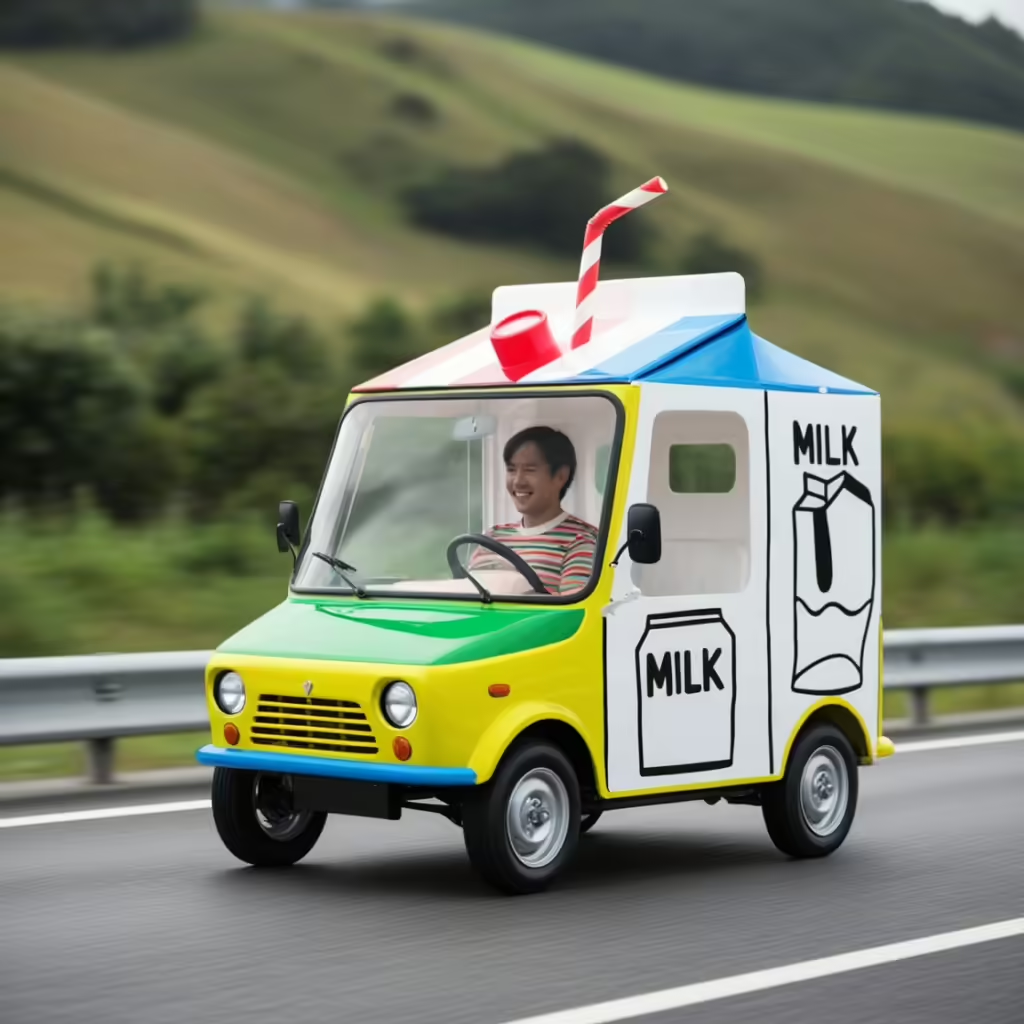
The Global Impact of Unique Car Designs
As we’ve seen with other unique vehicles, the global impact of a quirky design like the milk carton-shaped car extends beyond just its novelty. These cars could symbolize a shift toward more customizable, sustainable, and imaginative modes of transportation.
Cultural Appeal Across Regions
Different regions around the world have varying tastes when it comes to car design. In markets like Japan, where “kawaii” (cute) aesthetics are highly valued, a milk carton-shaped car could be a major hit. Similarly, in eco-conscious cities like Copenhagen or Portland, the sustainability aspect could be the key selling point. Understanding these cultural preferences could help designers and manufacturers tailor their offerings for global markets.
Influencing Future Automotive Trends
Whether the milk carton-shaped car becomes a widespread phenomenon or remains a niche product, its influence on future automotive trends is undeniable. The vehicle’s emphasis on playful design, sustainability, and customization could inspire a new wave of creative and environmentally friendly car designs, encouraging other manufacturers to think outside the box (literally) when creating the vehicles of tomorrow.
Conclusion: A Future Full of Possibilities
The milk carton-shaped car may seem like a novelty at first glance, but it represents much more than that. It’s a bold statement about how creativity, sustainability, and technology can come together to challenge traditional automotive design. As we look to the future, these quirky vehicles could play a role in reshaping urban transportation, eco-friendly marketing, and even the global car industry itself.
From its humble origins in design studios to its potential as a symbol of urban mobility and environmental consciousness, the milk carton-shaped car is driving conversations about the future of transportation. Will we see these boxy cars on every corner? Maybe, maybe not—but they’ve already succeeded in capturing our imagination and opening up a world of possibilities.
In a world that increasingly values sustainability, customization, and creativity, the milk carton-shaped car might just be the fun, eco-friendly vehicle we never knew we needed.
